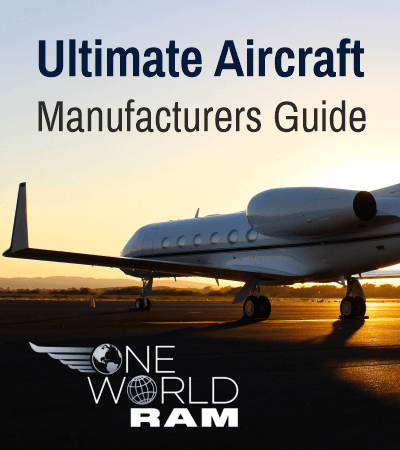Discover the remarkable Diamond DA20, a two-seat light aircraft that has revolutionized flight training and general aviation. Whether you’re a flight school operator, aspiring pilot, or aviation enthusiast, this comprehensive guide explores the aircraft’s capabilities, specifications, and what makes it a preferred choice in modern aviation.
The Diamond DA20 stands as a testament to innovative aircraft design, combining efficiency and performance in a compact package. Since its maiden flight in 1991 and introduction in 1992, this Austrian-designed aircraft has maintained continuous production since 1994, with over 1,000 units manufactured. Its tricycle gear configuration and user-friendly design have made it a cornerstone in flight training programs worldwide.
History and Development of the Diamond DA20
Evolving from the HK36 Super Dimona motor glider, the Diamond DA20 represents Diamond Aircraft’s vision for modern flight training. The DA20-C1 variant, initially produced as the DV20 in Austria, marked a significant milestone in aviation training aircraft development. Through continuous refinement and improvement, the aircraft has maintained its position as an industry leader in flight training.
Key Features of the Diamond DA20
- Low-wing design with wasp-waisted empennage and sailplane-like T-tail
- Large bubble canopy offering superior visibility
- Fighter-style stick control configuration
- 11:1 glide ratio for enhanced safety
- Composite structure for smooth flight characteristics
- 24-gallon fuel capacity
- 584 lb useful load capacity
Diamond DA20 Specifications
| Specification | Measurement |
|---|---|
| Length | 23 feet 9 inches |
| Height | 7 feet 1 inch |
| Wingspan | 35 feet 9 inches |
| Empty Weight | 1,180 pounds |
| Maximum Gross Weight | 1,764 pounds |
Engine and Performance
- Engine: Continental IO-240-B3B (125 horsepower)
- Climb Rate: 830 feet per minute at sea level
- Service Ceiling: 13,100 feet
- Takeoff Ground Roll: 1,256 feet
- Total Takeoff Distance (50-foot obstacle): 1,640 feet
- Landing Distance (50-foot obstacle): 1,360 feet
Cockpit and Avionics
The DA20’s cockpit features a distinctive bubble canopy design that maximizes visibility and accessibility. The modern avionics suite includes:
- Garmin G500 glass cockpit (optional)
- PS Engineering PM 1000 intercom
- GTN635 GPS/COM
- GTX 345 Mode S Transponder
- UMA engine instrumentation systems
- 406 MHz Emergency Locator Transmitter
Fuel Efficiency and Range
Operating at 55% power, the DA20-C1 demonstrates exceptional efficiency with a fuel consumption of 5.3 gallons per hour. This efficiency translates to an impressive range of 525 nautical miles, making it ideal for both training circuits and cross-country flights. The aircraft’s compatibility with AVGAS 100LL ensures widespread fuel availability at most airfields.
Performance Insights of the Diamond DA20
The Diamond DA20 excels as a training aircraft with its impressive performance profile. Powered by the Continental Motors IO-240-B32B engine delivering 125 hp, the aircraft achieves a normal cruise speed of 118 knots (135 mph), perfectly balancing efficiency with training requirements.
| Performance Metric | Distance |
|---|---|
| Takeoff Ground Roll | 1,256 feet |
| Takeoff Distance (50-foot obstacle) | 1,640 feet |
| Landing Distance (50-foot obstacle) | 1,360 feet |
Flight Characteristics
- Excellent glide ratio of 11:1, enhancing safety during emergency scenarios
- Smooth flying experience due to composite structure construction
- Responsive handling in turns while maintaining forgiving characteristics
- Fighter-style stick configuration with right-hand stick control
- Superior visibility through large bubble canopy design
Training Capabilities
The DA20’s training prowess is demonstrated through its impressive performance metrics, including an 830 feet per minute climb rate at sea level and a service ceiling of 13,100 feet. These capabilities enable comprehensive training across various flight conditions and maneuvers.
- Adopted by the United States Air Force Academy for initial flight training
- Modern avionics options including Garmin G500 glass cockpit
- Excellent platform for both basic and advanced flight training
- Cost-effective operation with efficient fuel consumption
- Predictable handling characteristics ideal for student pilots
Safety and Maintenance of the Diamond DA20
The Diamond DA20 combines advanced safety features with efficient maintenance requirements, making it a preferred choice in the training aircraft market. Its composite structure provides superior crashworthiness compared to traditional metal designs, while maintaining cost-effective operation for flight schools and private owners.
Safety Features
- Integrated safety cell protecting cockpit and critical systems
- Enhanced visibility through bubble canopy design
- 4-point inertia reel harnesses for secure occupant restraint
- Ergonomically designed seats with premium surface options
- Professional-grade instrument panel layout
Maintenance and Operating Costs
| Cost Category | Amount |
|---|---|
| Variable Costs (200 hours) | $23,168 |
| Fixed Costs | $82,880 |
| Hourly Operating Cost | $530 |
| Annual Budget (Owner-operated) | $106,048 |
The aircraft’s maintenance schedule emphasizes efficiency through regular fuel system checks, engine inspections, and avionics updates. The composite structure requires fewer corrosion inspections than metal airframes, contributing to reduced long-term maintenance costs.





Leave a Reply